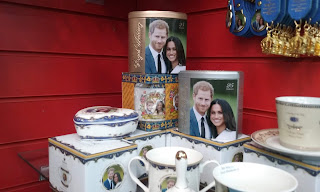Here are some new savoury recipes I experimented with last
winter, some of them with the great help of my mum who gave me some good tips.
Piccoli
calzoni (small ‘trousers’)
Calzone is made with pizza dough folded over and
filled with whatever you like, usually with mozzarella, ham, ricotta and tomato
sauce. I made little ones using different ingredients for the dough.
For the dough you need: 250 g of raising flour, 1 egg,
1 tbsp of melted butter, salt, 100 ml of lukewarm water.
For the filling you need: 100 g of ham, 100 of
mozzarella, 1 egg, pepper; or prosciutto and mozzarella; or mushrooms and mozzarella;
or courgette and mozzarella.
Mix the ingredients for the dough and let it rest for
half an hour. Then prepare the filling. Grind the ham and mozzarella in a
blender and add one egg and pepper. You can also prepare other fillings as
suggested above, always add the egg and, if you like it, some pepper. The
courgette and the mushrooms need to be chopped and cooked separately in advance
in a pan with some oil and salt before being ground and mixed with mozzarella.
Roll the dough out and cut round shapes using an egg
ring or any other ring shape you have (a glass or a mug for example) and fill
it with the mixture you have prepared. Fold the dough sheet over and seal it
damping the edged with water. Mark the edges with the tines of a fork. The
calzone should have the shape of a half moon. Set the little calzoni on a
greased oven tray and bake for 20-30 minutes at 200° C.
Ciacce
or fried pizzas
 This is a recipe from Tuscany; my mum and her sisters
used to prepare ciacce in November during the olive harvesting time, so the
workers could have some warm nourishing food when they came back from the
fields. They can be savoury or sweet and are not baked but fried in a pan.
This is a recipe from Tuscany; my mum and her sisters
used to prepare ciacce in November during the olive harvesting time, so the
workers could have some warm nourishing food when they came back from the
fields. They can be savoury or sweet and are not baked but fried in a pan. For the dough you need: 250 g of self raising flour, 1
egg, 100 ml of lukewarm water, half a tsp of salt or sugar, 1 tbsp of extra
virgin olive oil, and sunflower oil to fry.
For the dough you need: 250 g of self raising flour, 1
egg, 100 ml of lukewarm water, half a tsp of salt or sugar, 1 tbsp of extra
virgin olive oil, and sunflower oil to fry.
Mix all the ingredients and let the dough rest for
half an hour. Form small balls and roll them out in sort of small round pizzas,
make little holes taping the pastry with the end of a fork and fry them in oil.
When ready, sprinkle the top with salt and rosemary or oregano, or sugar for
the sweet ones. You can have the savoury ones together with cheese, ham,
salami, mortadella or prosciutto; the sweet ones can be good with nutella or
cream.
Focaccine
(small flat bread)
Focaccine are similar to ciacce (they can be savoury
or sweet) but the ingredients for the
dough are different and they are baked.
For the dough you need: 200 g of strong flour, 200 g
of plain flour, dry yeast (a sachet, 7g), 300 ml of lukewarm water, 2 tsp of
salt (or sugar), 2 tbsp of extra virgin olive oil.
Mix all the ingredients and let the dough rest in a
warm place covered with a damp cloth for about two-three hours, it should
double its size.
Roll out the dough and cut out circles using an egg
ring or a glass. Set them on a greased oven tray and season them adding on top,
for the savoury ones, rosemary or pancetta cubes, grated cheese, black or green
olives, chopped tomatoes, or simply sprinkling some salt on it. For the sweet
ones you can sprinkle some golden caster or Demerara sugar on top, add pine
nuts or mixed peel, sultanas or raisins, chocolate chips or dried fruit. Cover
them with a film and store in a warm place for one more hour. Bake for 20-30
minutes at 200° C.
Tortellini
My mum and I made homemade tortellini for New Year’s
Eve preparing the dough and the filling and cooked them in stock.
For the dough you need: 500 g of plain flour and 6
eggs.
 For the filling you need: 100 g of minced pork, 100 g
of minced beef, 1 egg, salt, pepper and nutmeg, 2 slices of mortadella, 1 tbsp
of grated parmigiano.
For the filling you need: 100 g of minced pork, 100 g
of minced beef, 1 egg, salt, pepper and nutmeg, 2 slices of mortadella, 1 tbsp
of grated parmigiano.
Prepare the dough mixing all the ingredients and let
it rest for half an hour. Prepare the filling cooking the meat in a pan with
some oil and grind all the ingredients in a blender.
Roll out the dough and cut squares measuring on each
side 2-3 inches (it depends on how big you want your tortellini), put a little
bit of the filling in the centre of the square and fold it over forming a
triangle. Wrap the triangle around your index finger, seal the two apexes (damp
it with water if needed), and fold over the third apex. Here you are your
perfect (or imperfect, which is good) tortellino. You can cook them in stock,
as we did, or in water, drain and season it with tomato sauce or cream, and
plenty of parmigiano.




















